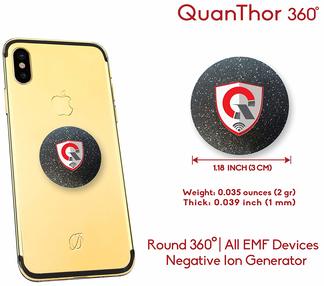This article focuses on the subject of 5G radiation. It is a non-ionizing form of electromagnetic radiation. Since 5G radiation is small, it doesn't have the ability to break chemical bonds in biological tissue or cause any changes to cells. It isn't known if 5G radiation affects the risk of skin cancer, and there is no evidence that has been discovered to suggest that it can cause other disease.
Millimeter-wave radiation with high frequency
High-frequency millimeter wave radiation emitted by mobile devices and wireless networks could cause adverse health effects for human beings. There are several ways this radiation could be harmful. In some cases the radiation could cause damage to the person's DNA. In other cases it could cause damage to other areas within the body like the brain.
Recent research has shown that 5G technology could result in tissue heating. In 5g and radiation , scientists from International Council on Non-Ionizing Radiation Protection (ICNIRP) has asked for a review of the existing thermal and biological safety standards. The current exposure standards don't protect people from excessive heating in the event of exposure to millimeter wave pulses.

Skin cancer risk
There is no definite answer to the issue of whether radiation from 5G could cause skin cancer. However, it is believed that 5G RF-EMFs behave as high-LET ionizing radiations. In turn, they may cause high levels of free radicals in the skin. The FCC has not yet issued any specific guidelines regarding the potential dangers associated with 5G technology, and the debate continues.
Although there has been a variety of studies that examine the effects of higher-frequency radio waves on the human body however, their research has been small in scope. However, there is concern over the effects of millimeter-wavelength exposure on oxidative stress and gene expression. The effects could extend to the skin as well as other organs, such as the brain.
Impact on other diseases
The latest generation of technology for wireless, called 5G, is rapidly growing in popularity however, scientists are warning about its potential health risks. 5G technology is expected to significantly increase the quantity of electromagnetic radiation that is found in our environment. This issue has sparked debates in many countries including Switzerland. In September 2017 390 doctors and scientists have backed a motion to put a moratorium on 5G deployment. The motion was not taken seriously by the European Commission, which is responsible for regulating the use of technology like 5G.
Therefore it is necessary to conduct more research to assess the health effects of 5G. While 5g radiation effect wait studies have proven that 5G doesn't cause the same adverse effects on humans as radiofrequency from the older mobile networks. It also does not spread the new coronavirus type. Additionally it does not make people more susceptible to viral infections.
The measurement of exposure
The measurement of exposure to radiation from 5G is a crucial aspect of the security of 5G networks. There are two methods to measure exposure. One involves measuring RF power that is absorbed by human tissues. The other is measuring the quantity of radiofrequency energy released through an object. Radiation frequency energy (RF) is an energy field that is emitted through radio transmitters.
In the United States, the FCC has imposed a restriction on the energy density of 5G mobile devices. These tests only test the power density of a distance of only a few inches. they do not require measurements of every beam. FCC does not have to measure each beam. However, how much power is generated by each beam is estimated by computer simulation. The worst case scenario is then determined according to the beam's configuration. each beam.
The study has its limitations

There's been a lot of debate about whether the effects of 5G radiation are detrimental to the health of people. In the case of 5G, for instance. Swiss Government, for example has issued an assessment that concludes that the technology is not likely to cause adverse health effects in the short term, but there are no studies that have demonstrated long-term effects. However, this report also contains several issues and bias in reporting.
Go to this website and frequency of the radio waves that generate energy are determined by the frequency. The energy that is carried by a millimetre-wave will be the same as the frequency of radio waves currently however they will be less visible and are better suited for high-density environments as they won't be block by walls or glass. Highly dense urban areas will require many smaller, low-power locations, while suburban areas would be better served by 5G networks operating at lower frequencies.
